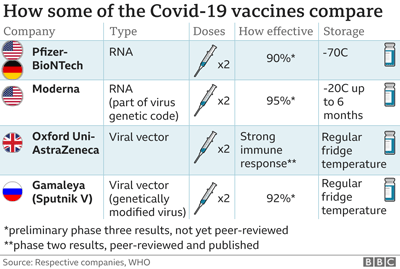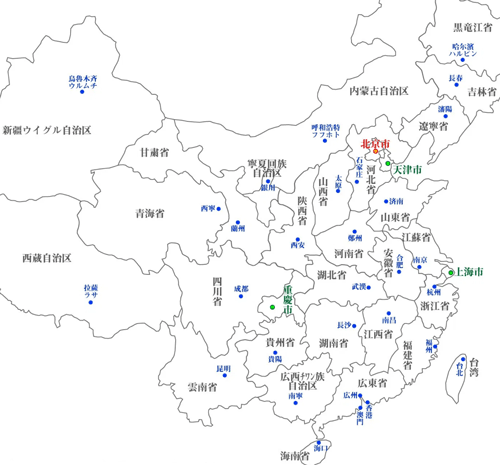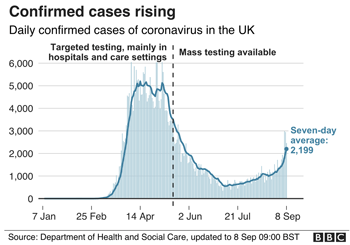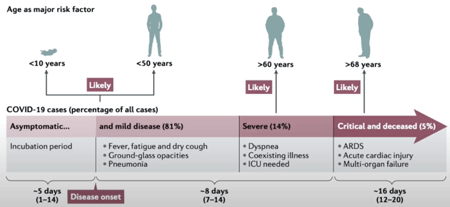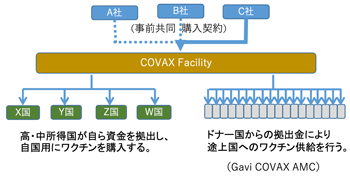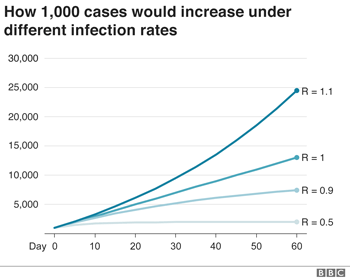>Top 13. Reopening Germany:
by Constanze Stanzenmüller & Sam Denney, Jun 16, 2020
- Given that experts and politicians in Germany are warning that the pandemic may last until the end of the year, it is perhaps too early to speculate about the post-coronavirus order.
For Germany, the “reopening” phase of the coronavirus pandemic presents two challenges. The first is finding and maintaining the delicate balance between saving lives and saving the economy. The second is preserving the ability to treat the country’s pre-existing conditions, notwithstanding its much-praised resilience in the first two months of the crisis: a political order in transition, an economy that despite its wealth faces significant structural and technological hurdles, and an increasingly unfavorable strategic environment. Because of Germany’s relative political weight and its importance as a large anchor economy in the middle of Europe, the consequences of its success (or failure) extend well beyond the country’s borders.
- Saving lives versus saving the economy:
Germany’s nationwide pandemic shutdown began with an announcement of “radical measures” by Chancellor Angela Merkel on March 16, followed by even more restrictive rules on March 22. This emergency management framework received a great deal of praise at home and abroad for being decisive, evidence-based, and judicious. Arguably, it was key in flattening the German infection curve. But the decision-making process reflected both the weaknesses and the strengths of the country’s federalist culture: mayors, state leaders, and the federal government bickered in public over who was responsible while the infection curve vaulted upward in late February and early March. In the end, careful closed-door negotiations between Merkel’s Chancellery and the governments of the Länder, Germany’s sixteen states, led to a dependable political consensus.
- By early May, Germany had recorded just over 160,000 COVID-19 infections, 127,000 recoveries, and nearly 6,500 deaths (a mortality rate of 4.0 percent). The reproduction factor (which measures how many people are infected by each new case) had dropped below 1. Across the country, 2.7 million tests had been administered, at a rate of more than 330,000 per week. On May 6, Chancellor Merkel announced a carefully controlled restarting of public life, nearly two months after decreeing a nationwide shutdown. “We can afford a little audacity,” she said.
According to the statement agreed by the federal and state governments, social distancing rules are to be maintained (with masks still obligatory in many places) in slightly looser form until June 29. Large gatherings remain prohibited until at least August 31. But schools, stores, restaurants, tourism, cultural centers, and outdoor recreation spaces are to gradually reopen; and the Bundesliga, Germany’s soccer league, began playing games to empty stadiums from mid-May. The details of implementation, however, are left to the states. Local health agencies (often working through call centers staffed by students) are tasked with tracing. An emergency mechanism now requires states to reinstate restrictions in reaction to new coronavirus flare ups (defined as 50 new infections per 100,000 inhabitants over a week). All this pushes decision-making to the local level, permitting a differentiated response to significant regional variances in infection levels.
- >Top Still, Merkel noted that the country remains at the beginning of the pandemic, and “we will have to deal with this virus for a long time.” German districts in several states have since reported outbreaks in senior care homes, refugee centers, and in meat-packing plants, triggering a local return to stricter rules. The Robert Koch Institute, Germany’s equivalent of the Centers for Disease Control and Prevention, warned sternly that it would be “necessary to observe the development very closely over the coming days.” Some German epidemiologists weighed in, calling the trigger threshold of 50 per 100,000 inhabitants arbitrary and probably too high. In mid-May, the Bundestag (the federal legislature) took the precaution to mandate more testing (especially for those working with at-risk groups), greater transparency in reporting test results, and more financial support for care-workers tending to the elderly. Clearly, audacity will have to be tempered with prudence and patience. In late May, the outlook seemed more hopeful than not: Germany’s COVID-19 deaths were nearing 8,000 (4.6 percent), but the number of new cases was flattening, and the reproduction factor was less than 1.
- As for Germany’s economy, the federal government tore up its fiscal rule book with the most comprehensive package of salvage measures in Europe on March 25. It is unparalleled in the country’s postwar history, and even the measures taken in the context of the global financial meltdown of 2009 pale in comparison. Funding for Kurzarbeit (short-time work), a scheme whereby the state compensates employers for keeping furloughed employees on the books by paying two thirds of their wages, was massively expanded. The government also announced €400 billion ($433 billion) in liquidity guarantees for larger firms and direct grants for 3 million small companies and freelancers, totaling around €700 billion ($834 billion)—the equivalent of two annual national budgets. To accomplish all this, the government had to invoke an emergency clause to that most sacred of all sacred German cows: the Schwarze Null (black zero) constitutional debt brake. Bureaucracies across the country went into overdrive to ensure that companies and individuals got their money within days.
However, economic reality quickly overtook the government’s actions. By late April, German companies had registered a “breathtaking” (in the words of Detlef Scheele, the head of the federal labor agency) 10.1 million employees for Kurzarbeit. Companies have to pre-register their employees for this scheme based on very rough estimates, so the actual number of workers furloughed in the end may be smaller. By comparison, 3.3 million workers were registered during the global financial crisis of 2009, and 1.4 million received furlough compensation. At the time, this enabled big industrial plants to call their workers back in and ramp up production again quickly. Yet many of the registrations came from small and medium enterprises, many of whom might not survive the crisis at all, ultimately leaving their workers jobless despite the protective measures. Job losses surged by more than 300,000 in April to a total of 2.64 million, pushing the unemployment rate to 5.8 percent.
- Meanwhile, the Federal Statistical Office reported that while consumption of disinfectant, soap, toilet paper, and condoms has jumped, production of key German export goods—chemicals, machine tools, cars, and car parts—fell to levels comparable to those of the financial crisis. The private Statista consumer confidence index has plummeted. Surveys conducted in April by the Ifo Institute for Economic Research show production expectations across German industry,
but in the auto industry in particular, at historic lows.The government is reportedly mulling an economic stimulus package of up to €150 billion, but has said it won’t decide before June. The automotive lobby, specifically, has called for purchase premiums or scrappage bonuses, which are supported by the minister presidents of Lower Saxony, Baden Württemberg, and Bavaria, where hundreds of thousands of jobs depend on car and car parts manufacturers. But the German Council of Economic Experts, an independent group that advises the federal government, foresees a recession with a GDP drop in 2020 between -2.8 and -5.4 percent; the IMF’s prediction is even more dire at -7.0 percent. Tax revenue estimates, according to reports from an expert advisory group to the finance ministry, are down €100 billion ($108 billion) — and possibly a total of €300 billion ($335 billion) over the next four years.
- Pre-Existing Conditions:
Given that experts and politicians in Germany are warning that the pandemic may last until the end of the year, it is perhaps too early to speculate about the post-coronavirus order. Nonetheless, some developments are worth noting.
Pre-pandemic Berlin was obsessed with the slump in the polls of Merkel’s fourth and (according to her) last coalition government, and with the surprise resignation in February of her heir presumptive, defense minister Annegret Kramp-Karrenbauer as leader of Merkel’s center-right Christian Democratic Union (CDU). In a nation-wide poll from early May, however, the CDU’s approval rating shot up by more than 10 percentage points to 39 percent (its coalition partner, the Social Democrats, continues to languish at pre-pandemic levels of 16 percent). Merkel herself leads the personal popularity rankings with 68 percent, followed by her vice chancellor and finance minister Olaf Scholz at 59 percent. The man preferred by respondents as her successor, however, isn’t even an official candidate: Bavarian minister president Markus Söder (53 percent), who has been praised for managing the situation in his hard-hit state effectively and judiciously. Majorities of 54–56 percent dislike the three official candidates: Armin Laschet (minister president of North Rhine-Westphalia), Friedrich Merz (ex-parliamentarian and businessman), and Norbert Röttgen (chair of the foreign policy committee in the Bundestag).
- The same poll suggests that Germans overall approve of the federal government’s crisis management (satisfied/very satisfied: 67 percent), are optimistic that they will keep their jobs (84 percent), and that the restrictions on their freedoms are temporary (60 percent). While 54 percent want restrictions loosened, 41 percent would prefer the status quo.
Yet the voluntary self-discipline exercised by politicians and citizens alike in March when the county went into shutdown mode has visibly eroded; and this despite the fact that Germany’s restrictions were much more liberal than those in France, Italy, or Spain, and were initially successful in flattening the infection curve. State minister presidents have competed to present the earliest and most liberal opening rules, and opposition politicians and pundits inveighed against “government by epidemiologists.” Even the usually calm Merkel briefly lost her temper at what she called “Öffnungsdiskussionsorgien” (roughly: self-indulgent debates about loosening the rules).
- The hard-right Alternative für Deutschland (AfD) party, which before the crisis had had some success in splitting and infiltrating the right-wing fringes of the CDU, has largely been sidelined during the first months of the crisis and has sunk in the polls. But on the weekends after the gradual opening policy was announced, several German cities saw thousands of people demonstrating angrily against the shutdown, including some well-known far right populists and conspiracy theorists. Will the AfD manage to turn this mood to its political advantage, as it did during the refugee crisis of 2015? Federal President Frank Walter Steinmeier was careful to emphasize the right of citizens to criticize government handling of the pandemic. But an unnamed former minister told the daily Süddeutsche Zeitung that the protests seemed like a déjà vu to him, with a huge open-ended crisis, highly complex issues, a growing need for simple answers, and the radical right attempting once more to profit from the situation. “The only difference,” he said, “is that the problems today are even bigger.
”Pre-pandemic economic policy debates had centered on the question of whether the wealth and trade surplus of Europe’s largest economy were politically and economically sustainable, given a growing list of risks: the Trump administration’s trade war threats, a decade of underinvestment in physical and digital infrastructure, and the failure of key industries (the car industry foremost among them) to adapt to new trends and technologies. As one of the world’s largest exporters, Germany is also uniquely exposed to disruptions of its global supply chains, or in cross-border labor movements, and these vulnerabilities remain.
- >Top In geopolitical terms, Germany has yet to adapt to the stark climate change in international relations: the increasingly predatory behavior of the great powers China and Russia, and a United States that under the Trump administration has become recklessly volatile and often hostile toward its European allies. All these are arguments for reinforcing the strategic sovereignty of European nation states as well as of the European Union. But pre-pandemic Germany tended to zigzag between hard-edged national self-interest and hand-wringing appeals to multilateralism. Nationalist reflexes led it to prohibit exports of medical goods and close its borders at the outset of the pandemic. Since then, it has lifted the exports ban, flown in patients from other European countries, and pledged to take part in a global vaccine effort; borders are scheduled to open again by mid-June. The May 5 constitutional court ruling questioning the legality of the European Central Bank’s monetary policy was widely criticized as a major blow to the unity of Europe. Chancellor Merkel’s May 18 announcement, made together with French president Emmanuel Macron, of a €500 billion European recovery fund, was all the more sensational. One test of Germany’s EU presidency in the second half of 2020 will be persuading skeptical member states—the so-called “Frugal Four” (Austria, Denmark, the Netherlands, and Sweden)—to go along.
- An Uncertain Outlook:
The elements of Germany’s successful initial management of the pandemic are well-known: early, rigorous testing and tracking, large quantities of ICU beds and ventilators, a functioning civil service, considerable public trust and solidarity by citizens, political elites willing to put emergency action before partisan politics, a functioning social welfare economy with near-total insurance coverage, and a healthy national budget surplus.
Yet its failures have been equally visible: a combination of federalism and fractious politics meant time for political action was lost in the first weeks of the outbreak; early nationalist reflexes cost Germany political credit. And efforts to develop a German tracing app are still ongoing; according to media reports, it will not be available before mid-June.
The jury is still out on the long-term political, economic, and social consequences of the pandemic; some of the scenarios are relentlessly bleak. Yet there is proof that miracles do happen in Germany: the new BER international airport on the outskirts of Berlin, much derided for construction delays and design flaws that set it back by nearly a decade, is set to open in October. If this pig can fly—perhaps others can, too.
|
13.
ドイツの再開:
by Constanze Stanzenmüller & Sam Denney, (2020/6/16 )
- judicious: showing with good judgment or sence, 思慮深い
- arguably: it may be argued (argue=give reasons), おそらく、きっと
- vault: 跳び越す
- bicker: argue about trivial matters
- Länder: G. country
- audacity: willingness to take bold risks, 大胆、無謀
- weigh in: 意見を言う、論争に加わる
- furlough: 休暇(を与える)、一時帰休
- Schwarze Null (Black Zero) rule: a budget balanced between fiscal spending and tax receipts.
- breath-taking: 息を呑むような、驚くべき
- Kurzarbeit: short-time working
- ramp up: 増産する
- disinfectant: 消毒剤、殺菌剤
- Ifo: Information and Forschung (research): Ifo Institute for Economic Research, Munich-based largest economic think-tanks.
- mull: think about deeply, 熟考、思案する
- scrappage: goverment program that gives drivers a financial incentive to replace old cars with newer, more fuel-efficient ones.
- dire: extremly serious or urgent、悲惨な
- heir presumptive: 推定相続人
- languish: 停滞する
- minister president: ドイツ13州の首相
- pundit: 専門家、有識者
- inveigh: 罵倒する
- epidemiology: 疫学
- Alternative für Deutschland (AfD): ドイツのための選択肢党(極右政党)
- stark; sever or bare in appearnce, 厳しい、避けられない
- wring: squeeze and twist, 引き出す、絞り出す
- outset: 最初
- legality: 合法性
- GFCC (German Federal Constitutional Court) vs. ECB on 2020/5/5:
GFCC insists that ECB's purchases of sovereign debt under the Public Sector Purchase Programme (PSPP) of 2015 violate the boundaries that the European Treaties set to the ECB's activities. Such actions go beyond the competence that national legislators have provided to EU institutions through the Treaties, must not be tolerated; otherwise the basic rights of German citizens would be violated.
- Frugal Four: Austria, Denmark, Netherlands, Sweden; conservative members of EU, disagree with the idea of Eurobonds, and corona bonds aswell.
- bleak: cold and miserable, 荒涼とした
- BER: Berlin Brandenburg Airport, 2020/10/31開港
- deride: あざ笑う
|
- ドイツの専門家や政治家は、パンデミックが年末まで続くを見ており、ポストコロナがどうなるのかを予想するのは早すぎるとしている。ドイツにとって、コロナウイルスからの経済再開には2つの局面がある。一つは、声明と経済の救出との微妙なバランスをどう取るのかという問題。2つ目には、コロナ危機の最初の2ヶ月間はうまくいったが、それ以降の国の既存の状況にどう対処していくのかという問題、即ち、政治体制の移行問題、構造的技術的な課題を抱えている経済問題、戦略的な環境問題等である。ドイツは欧州中央の経済の重鎮として政治的比重も大きく、その成否は国外にも影響する。
- 生命の救済か経済の救済か:
ドイツの全国的なパンデミック封鎖はAngela Merkel首相の3/16に、また更に厳格なルールを示した3/22の"抜本的対策"宣言から始まった。この緊急対策の枠組みは、決定的で、根拠があり思慮深い内容であると内外から評価された。(>メルケル首相声明)おそらくドイツの感染曲線が頭打ちになっていることがキーであった。しかし、意思決定プロセスはドイツ連邦の風土(市長、州のリーダー、また2-3月に感染がぶり返したことの連邦政府の責任を問うこと等)を考慮すると強みにも弱みにもなる。結局、メルケル首相とドイツ16州リーダーとで密室でうまく政治的妥協がなされた。
- 5月初までにドイツのCovid-19患者は16万人に達し、内12.7万人が回復し、6,500人が死亡した。 (死亡率は4.0%) 基本再生産数も1以下になった。全国では270万件、毎週33万件の検査が行われた。5/6には、Merkel首相は、2ヶ月近くの全国の閉鎖措置の後、公的活動を注意しながら再開することを宣言した。"我々は少し大胆になることができるようになった"と彼女は語った。連邦と州政府の合意により、ソーシャルディスタンスの規制は(多くの場所でのマスクの着用も含め)、6/29までは少し緩和されたやり方で継続されることになった。大規模集会は、少なくとも8/31までは引き続き禁止された。しかし、学校、店舗、レストラン、観光、カルチャーセンター、野外のリクレーション施設は徐々に再開した。またサッカーリーグ(Bundesliga)は5月中旬より無観客で継続試合を開始した。細かな進め方はコロナの状況次第となる。地方の保健センター (しばしば学生にコールセンタ)はコロナ感染の追跡を行う。新たにコロナ感染が拡大する場合には、(具体的には、1週間で10万人当り50人の新規感染者が出る場合)緊急措置が発動される。この基準は地方レベルにも適用されるが、地方の感染レベルによっては異なる対応もあり得る。
- さらにMerkel首相は、地方はまだ感染拡大の初期段階であり、"このウイルスについては今後もっと長期間対抗しなければならない"と語った。ドイツのいくつかの地区では感染発症以来、シニアケアホーム、難民センター、肉詰加工工場などには更に厳しい規則を適用するとのこと。ドイツの疾病管理防止センターに相当するRober Koch Instituteは、"今後数日の状況推移を注視することが肝要"としている。また一部の感染症学者は、10万人当り50人の感染者の基準は恣意的で高すぎるとの意見である。5月中旬に、ドイツ連邦議会(Bundestag)は、さらなる検査、特にリスクの高いワーカーに対して実施し,その検査結果を透明性をもって公表すること、また高齢化が進むケアワーカーへのさらなる財政支援を行うよう義務化した。明らかに、大胆にやることは慎重さと忍耐によって緩和されるという面がある。5月末には、感染状況はさらに従来よりは希望が持てるようになった。ドイツでのCovid-19による死亡者は8,000人(4.6%)近かったが、新規感染者数は頭打ちになって、基本再生産数も1以下となった。
- ドイツの経済については、連邦政府は、欧州での最も普遍的な救済政策集を、3/25に破棄した。それは戦後で初めてのことで、2009年の世界的な金融メルトダウンの際の政策に比べても画期的なものである。短時間労働(Kurzarbeit)、この制度は被雇用者が一時帰休された場合、国が給与の2/3を支払うというもので、これをさらに拡充するという。また政府は、大企業向けの流動性保証のために、€400B ($433B)を、また中小企業や自由業者向け救済資金として€3Mを、合計€700B ($834B)これは2年分の国家予算に相当、を行うと発表した。これを実施するには、政府として金科玉条としてきた財政規律(Schwarze Null (black zero), 財政支出と税収とはバランスさせる)に関わる緊急事態を覚悟しなければならなくなる。全国の役人、会社や個人がこれらの資金を期日までに届けるための超過作業が必要となる。しかし経済的な現実は政府の行動を追い越してしまった。4月末までに、ドイツの会社は、10.1百万の被雇用者を短時間労働者(Kurzarbeit)に登録という画期的なことをしてしまった。会社は予め従業員を、概数でこの対象者を事前登録しておかなければならず、その結果、実際の対象者数は結局少なくなった。2009年の世界経済危機の場合は3.3百万の労働者が登録されたが、実際には1.4百万人がこの一時帰休の補填を受けた。この時は、大企業の工場は労働者を呼び戻し、早期に想定以上の増産にこぎつけた。しかし、この登録者は中小企業からが多いので、危機の時には倒産しかねず、それらの労働者は、政府の補填があっても失業してしまうかもしれない。失業者は4月には30万人以上となり、失業率は5.8%に達した。
- 一方、連邦統計局によれば、消毒液、石鹸、トイレットペーパー、コンドームの需要が急増し、ドイツの主要輸出品である化学品、機械器具、自動車、自動車部品は経済危機の時のレベルに低下した。ドイツのオンライン統計ポータル(Statista)によれば、消費者指数は急落した。ドイツ最大のシンクタンクであるIfo Institue for Economic Researchが4月の調査によれば、ドイツの産業、特に自動車産業は歴史的な低い水準であるとのこと。政府は経済刺激策として€150Bを準備した6月までに決まらないという。自動車産業のロビーは、特に、購入プレミアムやScrappage bonuses (燃費の良い車への購入補助金)を要求しており、これら政策は、自動車や自動車部品産業の従業員の多いLower Saxony, Barden Württemberg, Barvariaの州知事の支援を得ている。しかしドイツ経済専門家会議は、独立グループとして連邦政府に進言し、2020年のGDP下落を-2.8から-5.4%であると予測した。IMFは更に深刻な-7.0%を予測している。財務大臣に報告された税収の下落見込幅は、€100B ($108B)と予測し、おそらく今後4年間は、税収は€300B ($335B)で見込んでいる。
- 既存の諸条件:
ドイツの専門家と政治家は、パンデミック感染は年末までは継続すると警告しているが、ポストコロナの状況がどうなるかを予測するには早過ぎるとしている。しかし、ある想定は注目に値する。
パンデミック以前のベルリンでは、Merkel首相の第4期と最後の(彼女によれば)連立政権の支持率は低迷していたが、彼女の後継者と見られていた中道右派のキリスト教民主同盟(CDU)のリーダーでもあるAnnegret Kramp-Karrenbauer防衛大臣が急遽辞任してしまった。5月初の全国世論調査でも, CDUの支持率は10%も上昇し、39%となった。(連立の相手である社会民主党(SPD)はパンデミック以前の16%レベルで停滞)またMerker自身も個人的な人気は68%となり、それに次ぐのが副首相兼財務大臣のOlaf Scholzで59%であった。Merkelの後継者(まだ正式ではない)として人気があるのは、Bavaria州首相のMarkus Söder (53%)で打撃を受けた州をうまく管理したことが評価された。また54-56%の不人気となったのはArmin Laschet (North Rhine-Westphalia州首相)、Friedrich Merz (前国会議員で企業人)、およびNorbert Röttgen (連邦議会(Bundestag)の外交委員長)である。
- 同じ世論調査で、ドイツ人は概ね連邦政府の危機管理能力を評価している (満足+非常に満足 67%)、仕事を維持できることを楽観視 (84%)、一時的な自由の制限支持(60%)であった。一方、54%は制限緩和を望み、41%は現状を支持した。国が踏み切った3月のシャットダウンについて自主的な行動制限は段々価値を下げている。実際にはドイツの制限は、フランス、イタリー、スペインに比べて、ずっと自由度の高いものであったが、当初の感染率はそれでも抑えられた。各州の首相は競って早急な開放ルールを要求し、さらに政治家や専門家は"感染学者による政府"として強烈に反対した。普段は穏便なMerkel 首相も、ついに"ルールを緩和することは余りにも手前勝手だ!"と叫んだ。
- 極右政党であるAfD (ドイツのための選択肢)党は、コロナ危機前は、CDUの右派の一部としてある程度成功していたが、危機の最初の数ヶ月で人気は下落した。しかし経済再開政策が発表されると、一部の都市では過激な右翼ポピュリストと含め、数千のデモ隊がシャットダウンに激しく反対した。この動きを、2015年の難民危機の時のように、AfDは政治的に利用しようとするのかは疑問。ドイツ連邦大統領であるFrank Walter Steinmeier (SPD)は慎重な表現ながら、右派の市民は政府のコロナパンデミック政策に批判的なのだと語った。但し、これは彼にとってデジャブであって、終わりの見えない危機で複雑な問題では、単純な回答の方が人気となり、急進右派はその状況を利用しているのだとの某前大臣の意見を日刊紙南ドイツ新聞(Süddeutsche Zeitung)は伝えている。連邦大統領曰く、"唯一の違いは、今日の問題が遥かに大きいことである。パンデミック以前の経済政策論議は、欧州最大経済の富と貿易黒字は、政治経済的に維持可能であった。しかしながらリスク要因が拡大している。例えばトランプ政権による貿易戦争、物理的かつデジタルインフラに対する十年に亘る過小投資、中核産業の失敗 (自動車産業はその最たるもの)即ち、新たなトレンドと技術に適応しなかったことである。世界最大の輸出国家として、ドイツはそのグローバルサプライチェーンが損なわれてきており、国境をまたぐ労働力の以上など不確定要因が存在している"と。
- 地政学的な意味では、ドイツはこの厳しい国際的な変化にまだ適応可能である。中国、ロシア、トランプ政権の米国という利己的な大国は、欧州連合国に対し、激しくかつしばしば敵対的になってきた。これらは全て欧州の国民国家とEUの戦略的な主権を強化するための議論であった。しかしパンデミック以前のドイツは、強固に自国の利益を主張する面と、なんとかして相互主義を絞り出すようなジグザグな行動を取ってきた。国家主義者は、すぐさま医療部品の輸出を禁止し、パンデミックの当初からの国境封鎖を主張した。その後輸出禁止は解禁し、他の欧州各国からの患者も空輸し、グローバルなワクチン開発に関わった。国境は6月中旬には再開する予定である。5/5にドイツ連邦憲法裁判所(GFCC)による欧州中央銀行(ECB)による金融政策が(合法性に疑問を呈した)ことは、欧州の統一にとって大打撃となると非難されている。Merkel首相は、5/18のフランスEmmanuel Macron大統領との共同声明で、€600Bの欧州救済基金を発表したことは更に世間を騒がした。ドイツとしては、2020年後半にはEU大統領選挙が試金石であり、いわゆるFrugal Four (オーストリア、デンマーク、オランダ、スウェーデン、EU内の保守派)をいかに説得できるかである。
- 不確定要素の展望:
パンデミックに対するドイツの初期対応の成功はよく知られている。初期段階で、積極的な検査と追跡を行い、大量のICU用ベッドと換気装置を準備し、市民サービスを徹底し、国民の信頼と団結を勝ち取り、政治エリートは分派行動よりも緊急対応に邁進し、保険で完全にカバーする社会福祉経済を機能させ、かつ健全な国家財政黒字を達成した。しかしながらその失敗についても同様に明らかになっている。連邦主義と分権政治との政治的な調整に手間取り、ウイルス感染が拡大した最初の数週間、時間ロスした。初期段階で国家主義者による反対運動がドイツの政治状況の信頼を残った。その後、ドイツの感染追跡アプリの開発を続行したものの、6月中旬前には導入できなかった。また司法によるパンデミックの結果による長期的な政治・経済・社会的な状況についての意見も乖離している。そのシナリオは厳しく荒涼としたものである。しかしドイツに何か奇跡的なことが起こるかも知れない。それはベルリン郊外に建設される新たなBER (Berlin Brandenburg Airport)で、工事遅延やデザインなどで評判悪かったが、いよいよ2020/10月に開港となる。もしこのブタが飛び立つのなら、おそらく他のものもそうできるであろう。
|
